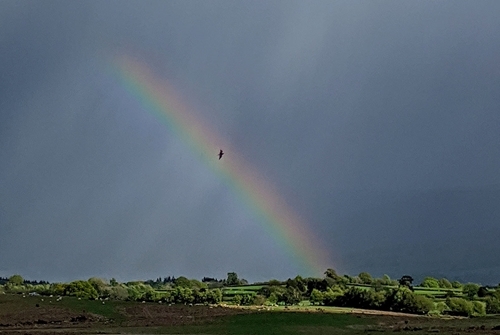By Owen Williams, GWCT Chairman for Ceredigion
Everyone is worried about curlew in Wales – our breeding population has seen a 62 percent decline over the past 25 years.

(Photo credit: James Roberts)
I have personal evidence of this decline near my house, south of Aberystwyth, where four years ago I witnessed a breeding attempt of a pair of curlew come to nothing due to predation from carrion crows nesting nearby.
I deeply regret that I didn’t intervene and cull the crows because I have seen no sign of those curlew each spring since. My local moorland, like many areas of Wales, no longer echoes with the sound of breeding curlew – spring isn’t what it used to be.
The original cause of this decline is loss of habitat through modernisation of agriculture. However, conservationists are worried that, even in areas where they still breed in Wales, their success rate is poor.
Recent research on lowland breeding curlew in England showed that they averaged only 0.16 fledglings per breeding attempt, which is well below the 0.60 needed to sustain the population.
Habitat restoration is a lengthy business and our curlew are running out of time. However, there is one conservation tool that can help ensure that we will continue to hear curlew calling in Wales: predation control by culling.
Conservationists and land managers working on the ground are only too aware that predation is contributing to breeding failure across Wales. Furthermore, the GWCT has published research showing that culling of predators can yield a threefold increase in breeding success in curlew.
A British Trust for Ornithology (BTO) report stated that: “upland areas of moorland and rough grassland where predator control is carried out are becoming increasingly important strongholds for breeding waders.”
The RSPB recognises the value of culling predators on its reserves, and although data on the numbers they kill is hard to come by, figures for 2016/2017 show that they killed a total of 528 carrion crow and 414 foxes on their reserves in order to protect ground-nesting birds.
So where’s the problem? Well, Wild Justice – a campaign group founded by Chris Packham, Mark Avery and Ruth Tingay – is pressing government to ‘greatly limit’ the circumstances in which carrion crow, a major predator of curlew eggs and chicks, can be culled. They have taken out a Judicial Review, which claims that the current arrangement under the General Licence, which allows farmers and land manager to shoot crows, is unlawful, as it allows what they describe as the “casual killing” of crows.
Meanwhile, the carrion crow population has remained relatively stable in Wales despite this ‘casual killing’ happening for many years. In contrast, our breeding curlew population is giving National Resources Wales such grave concerns that it predicts national extinction within 20 years.
Clearly something has to change to avoid this environmental tragedy occurring.